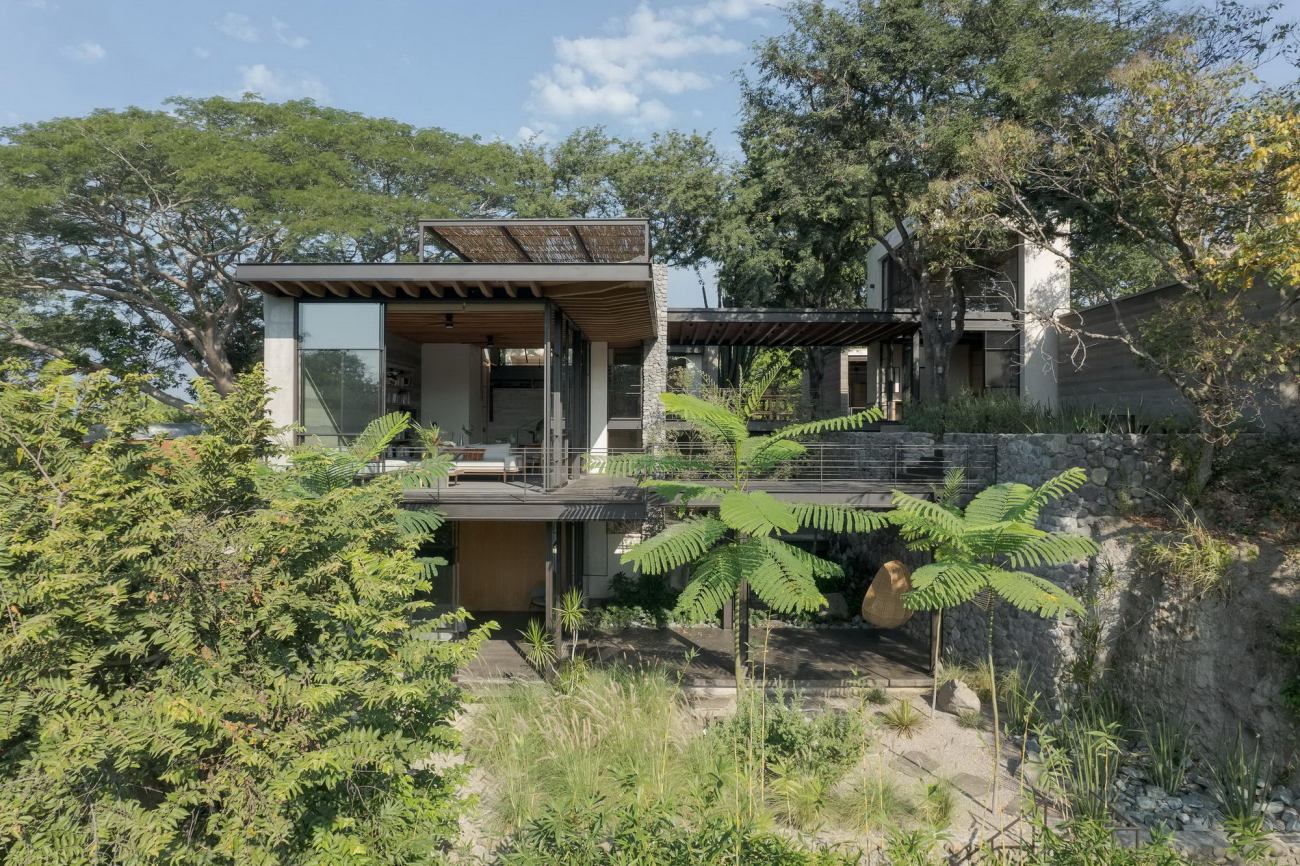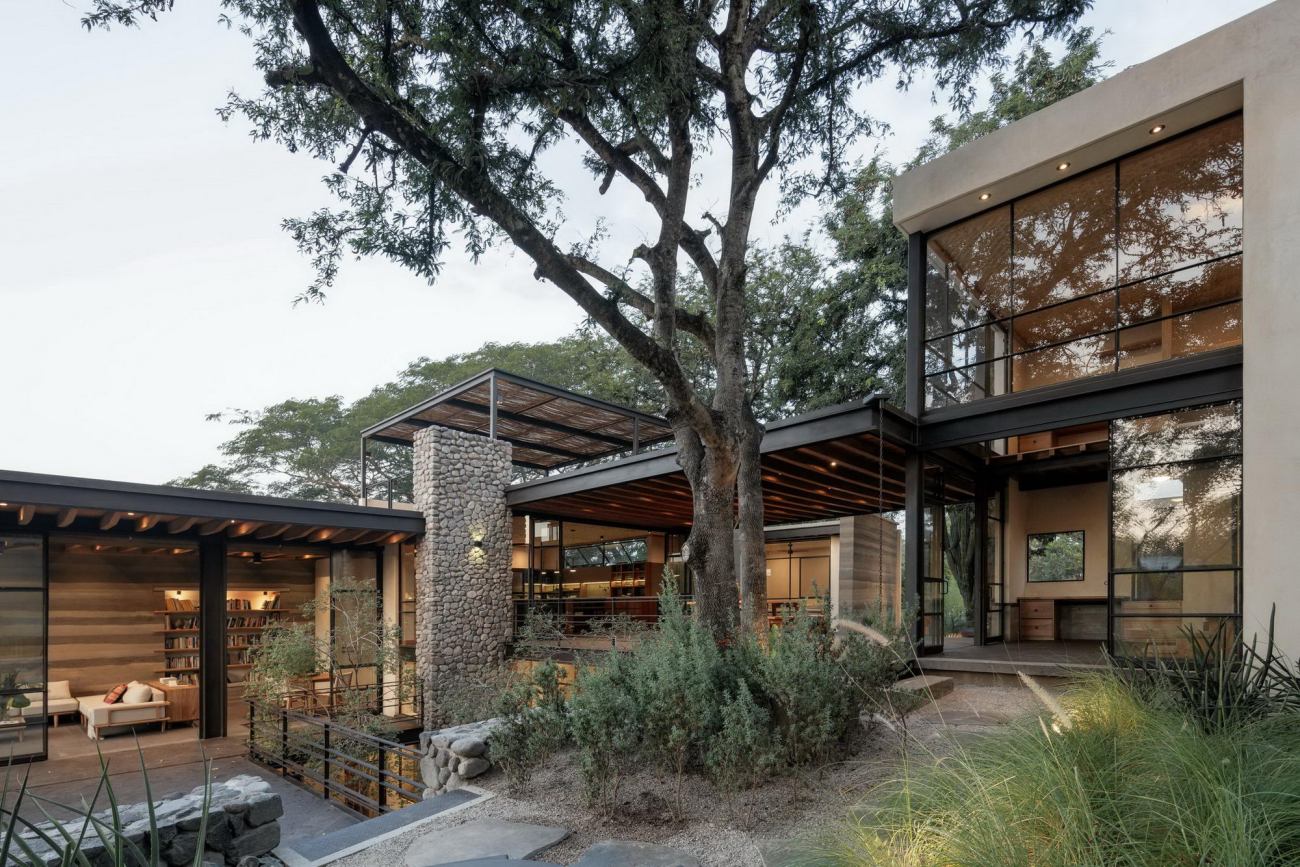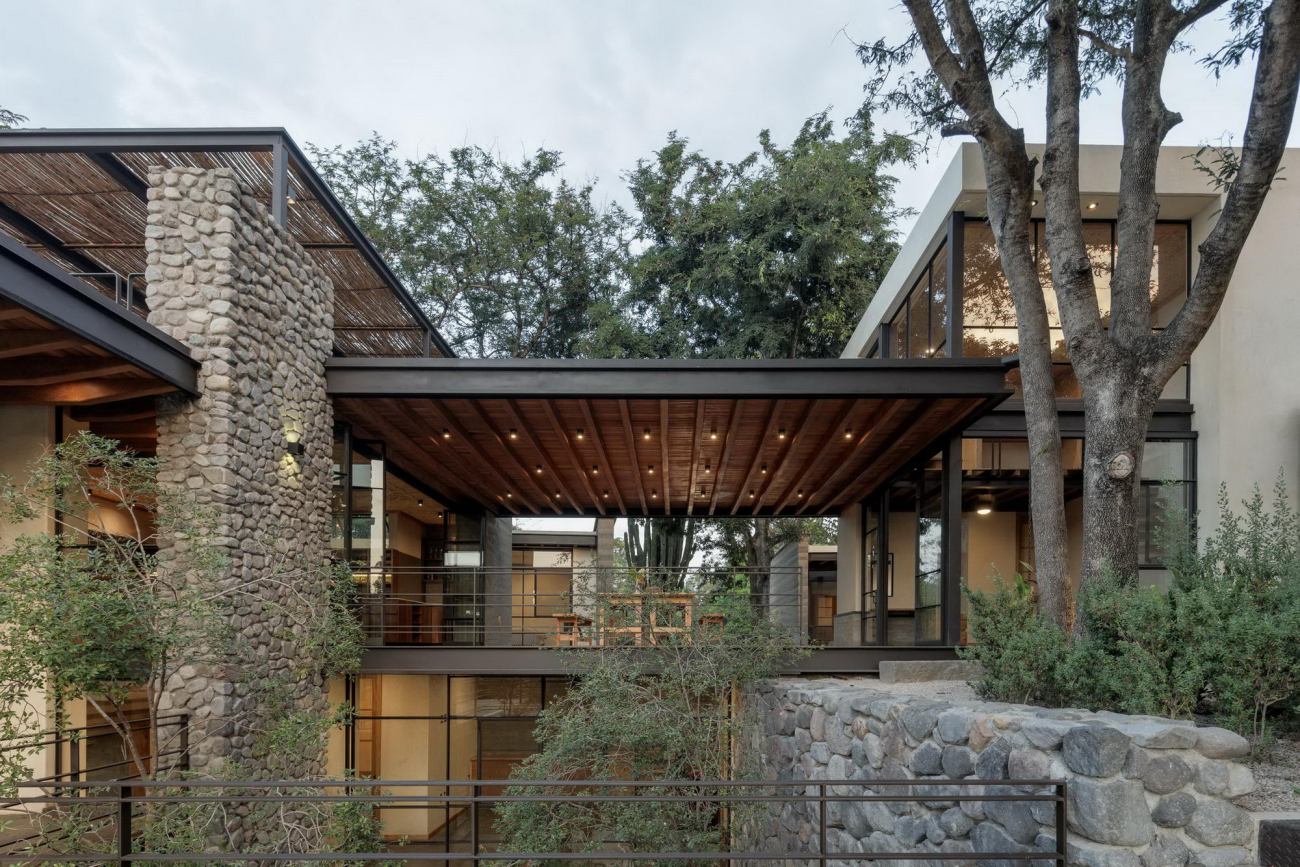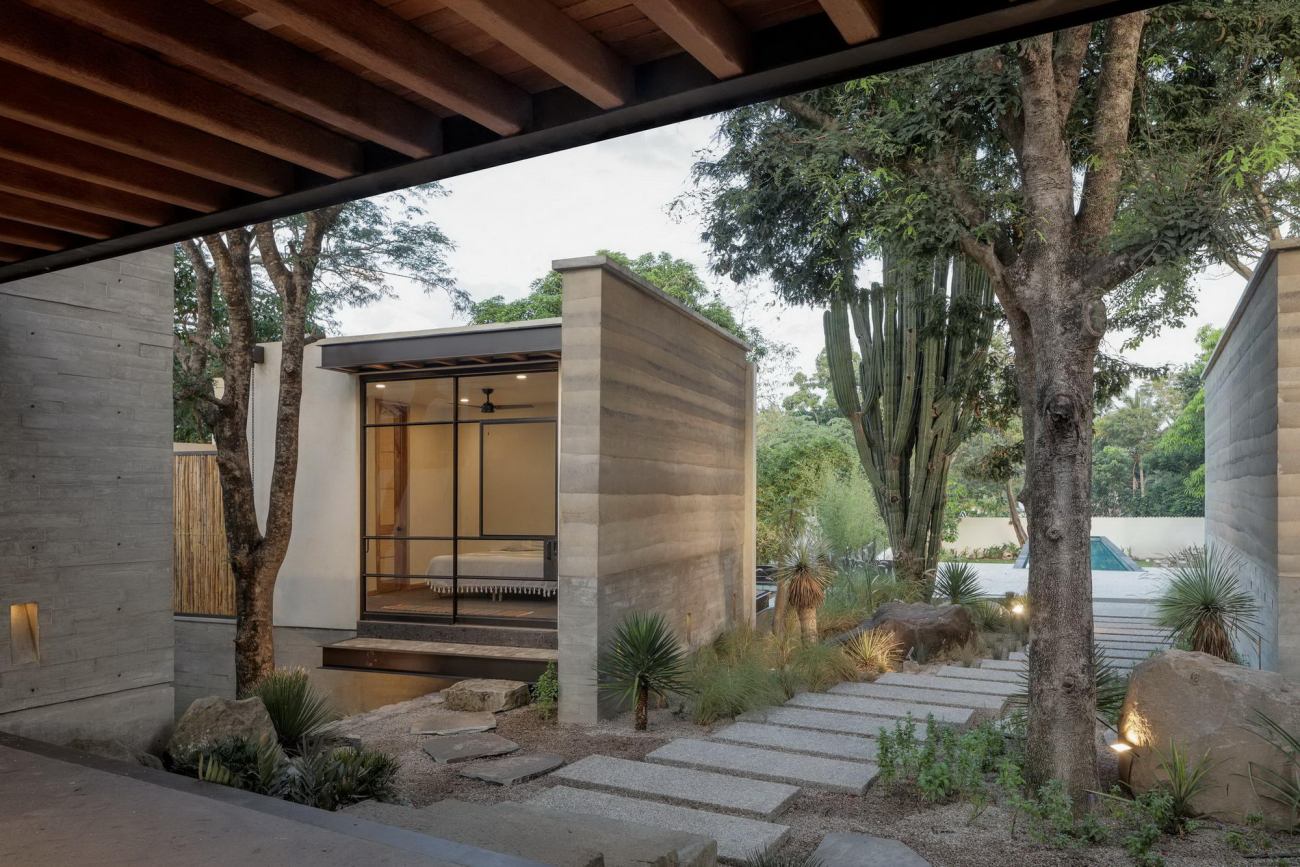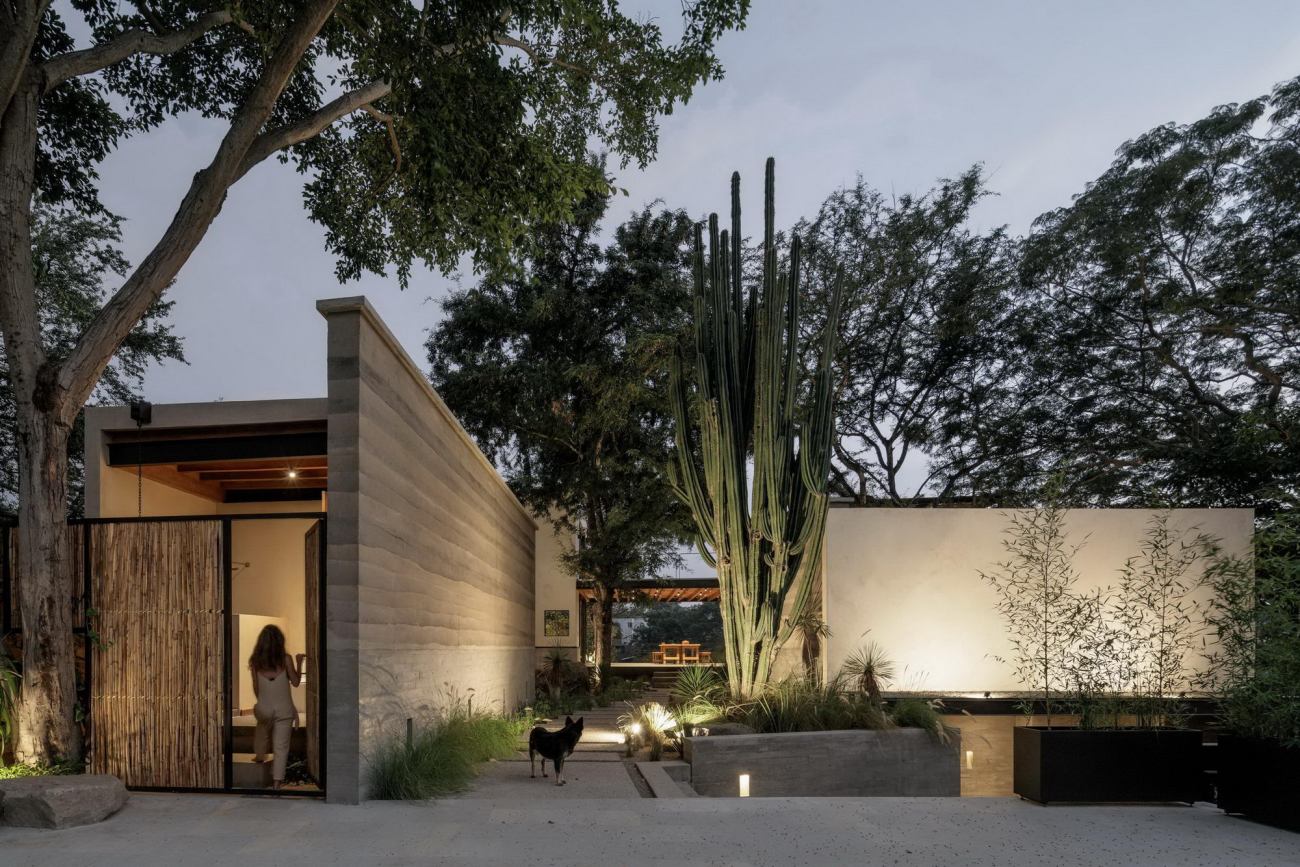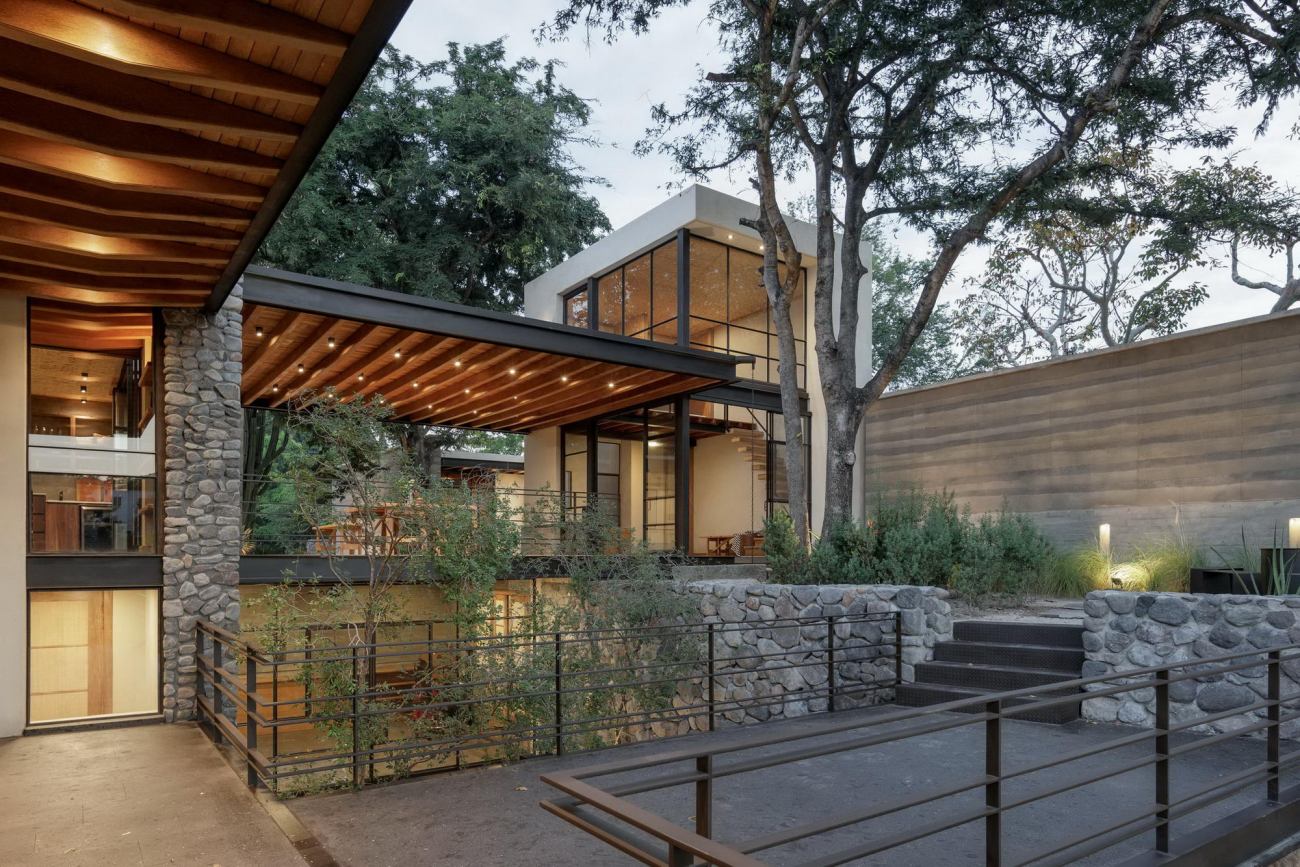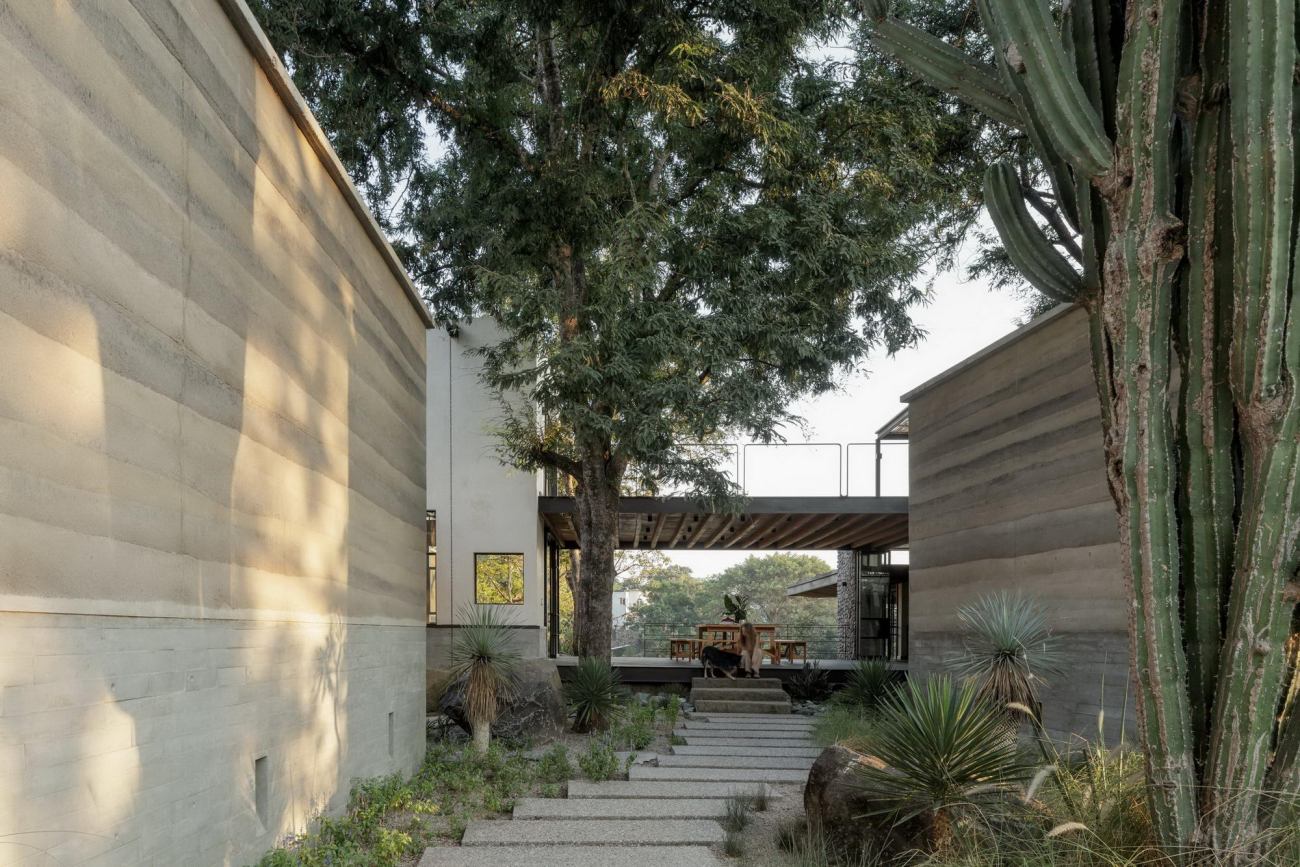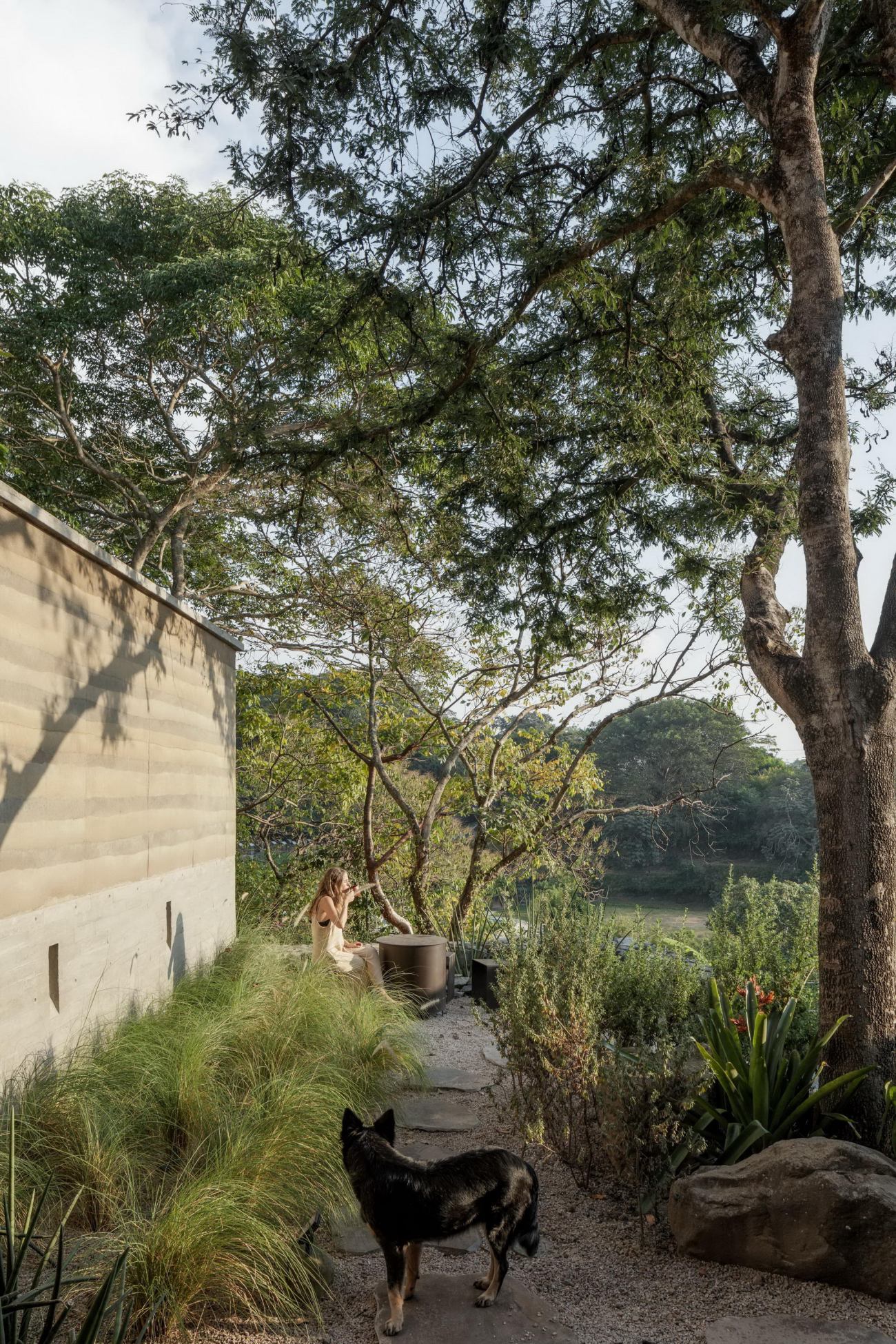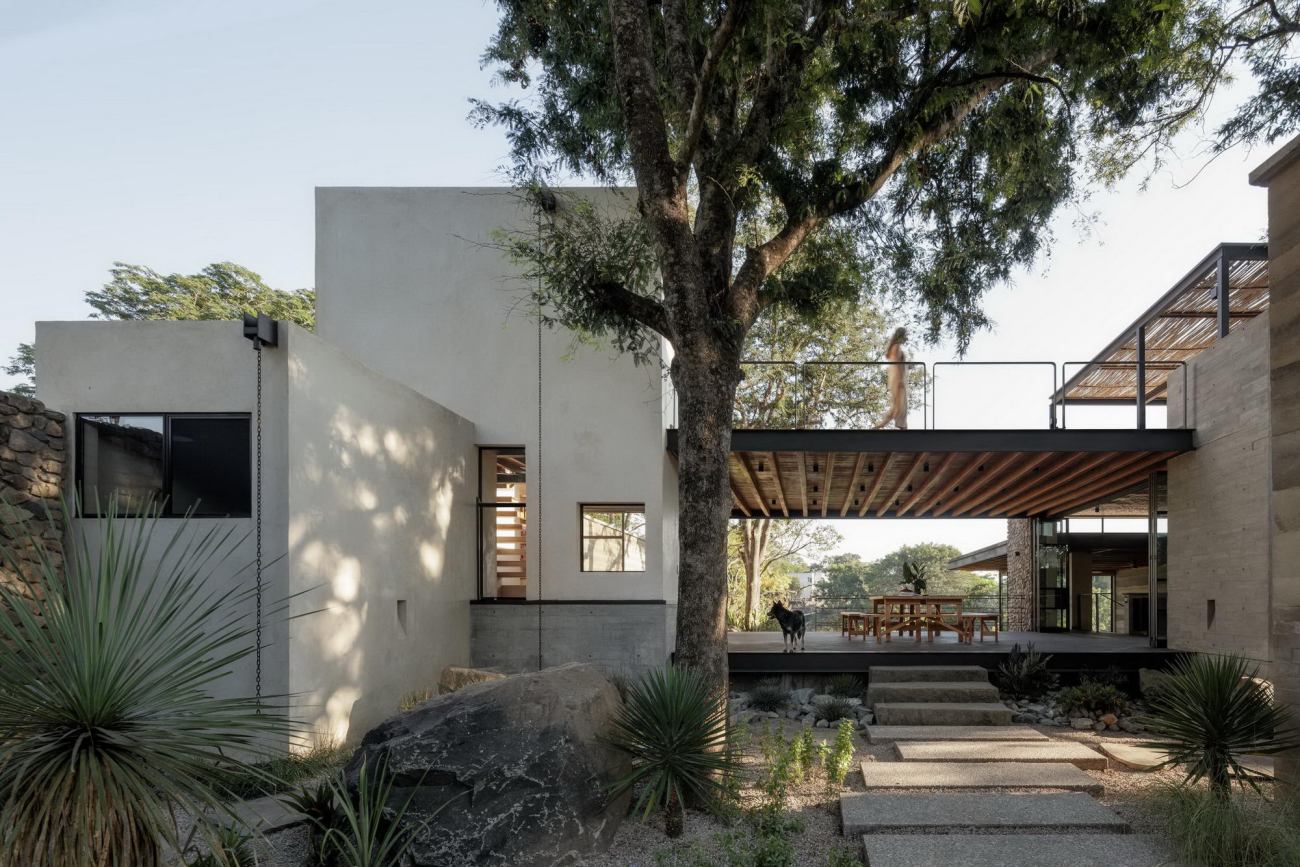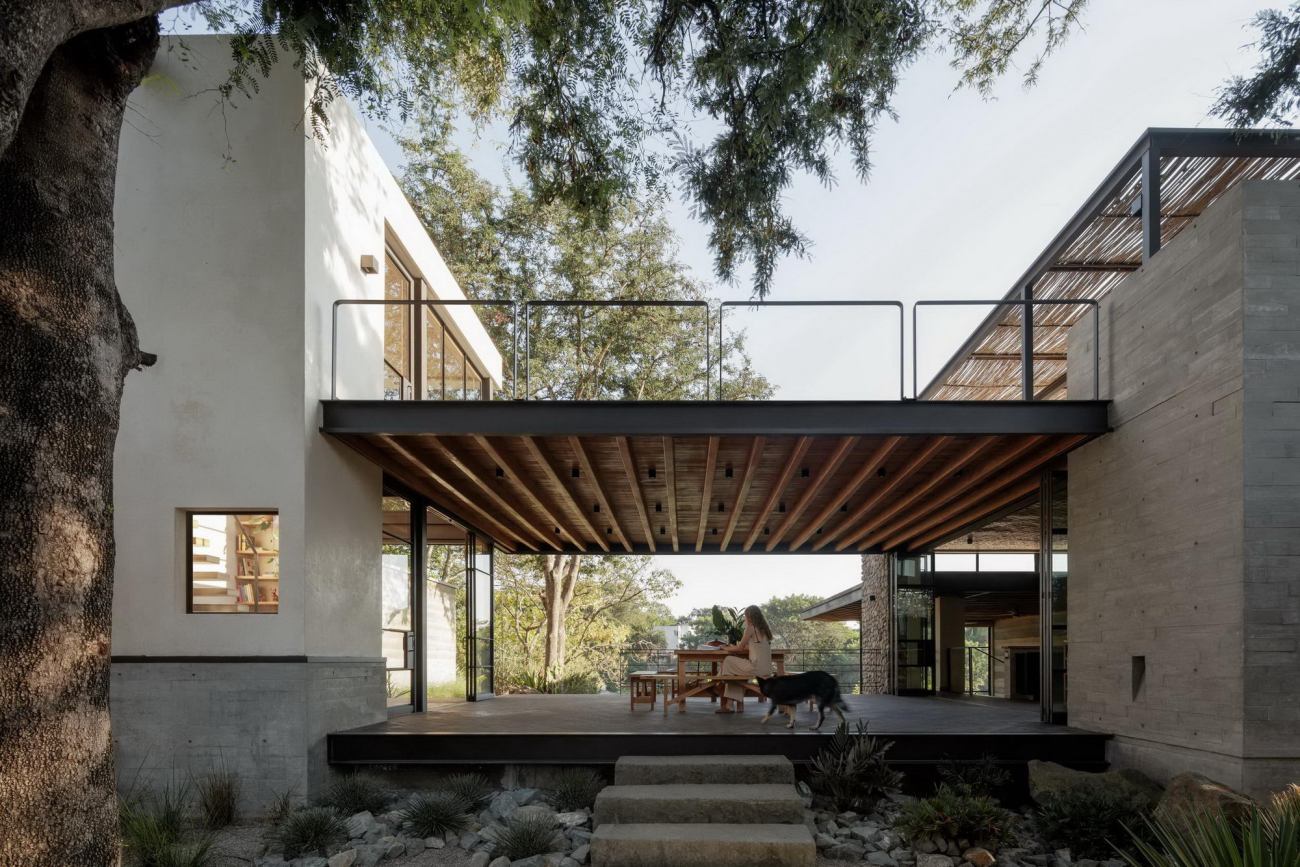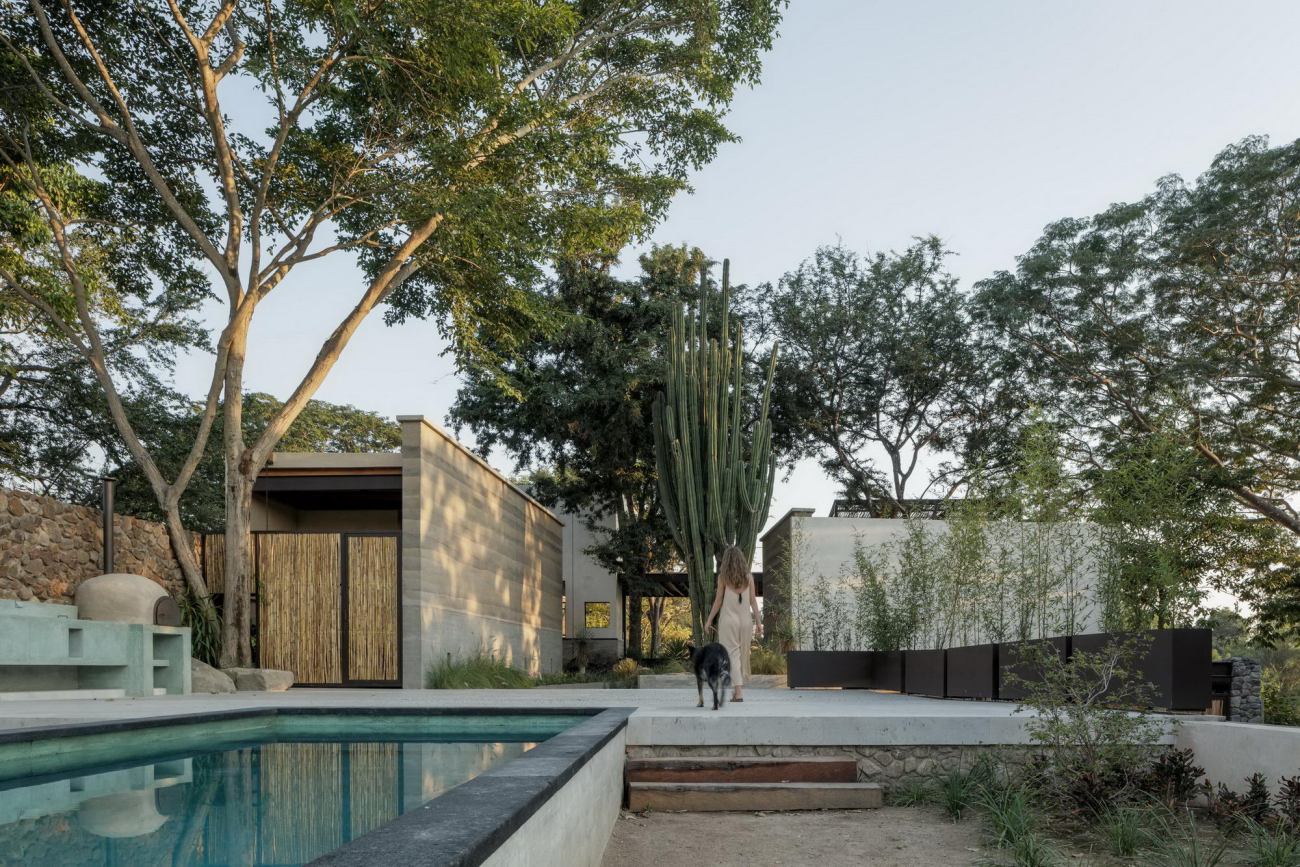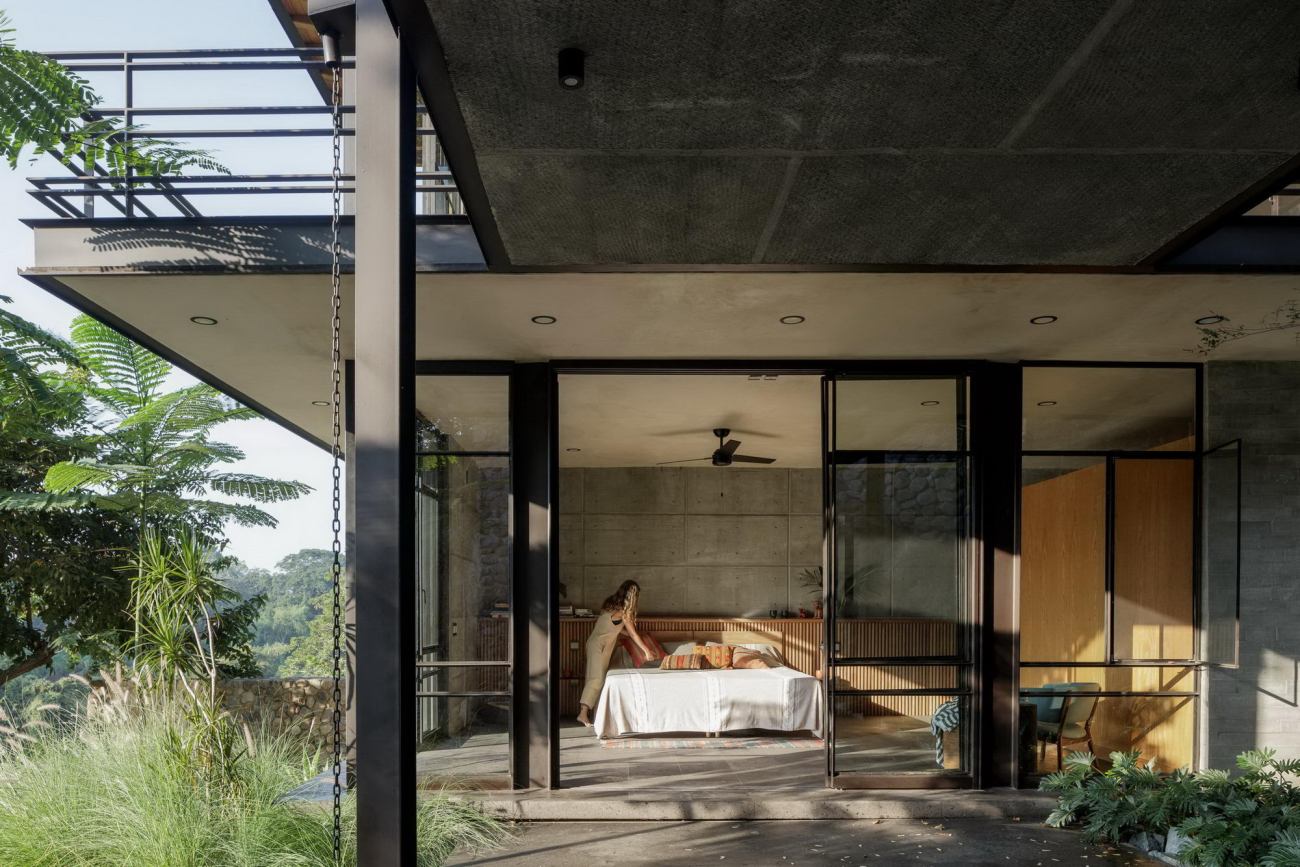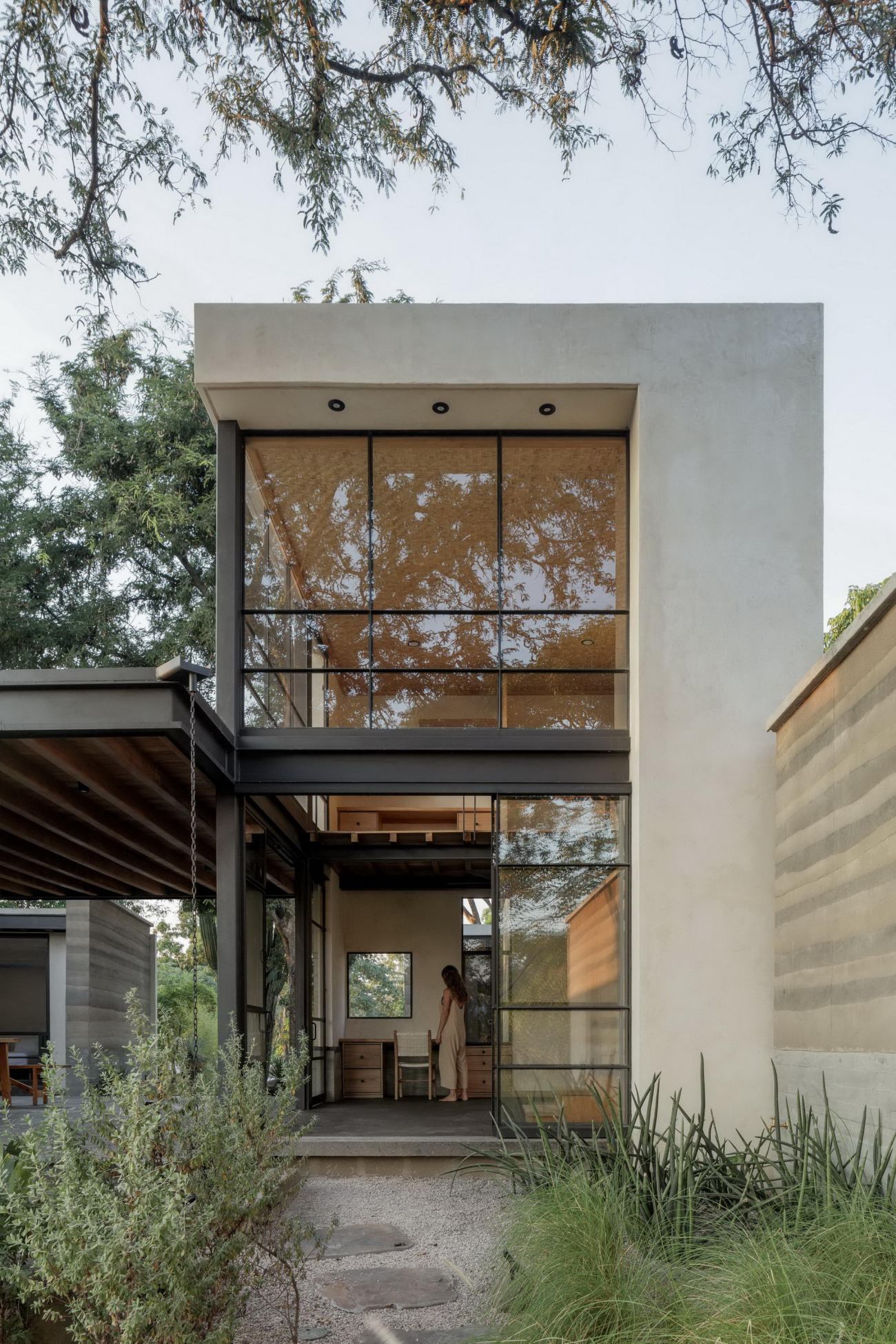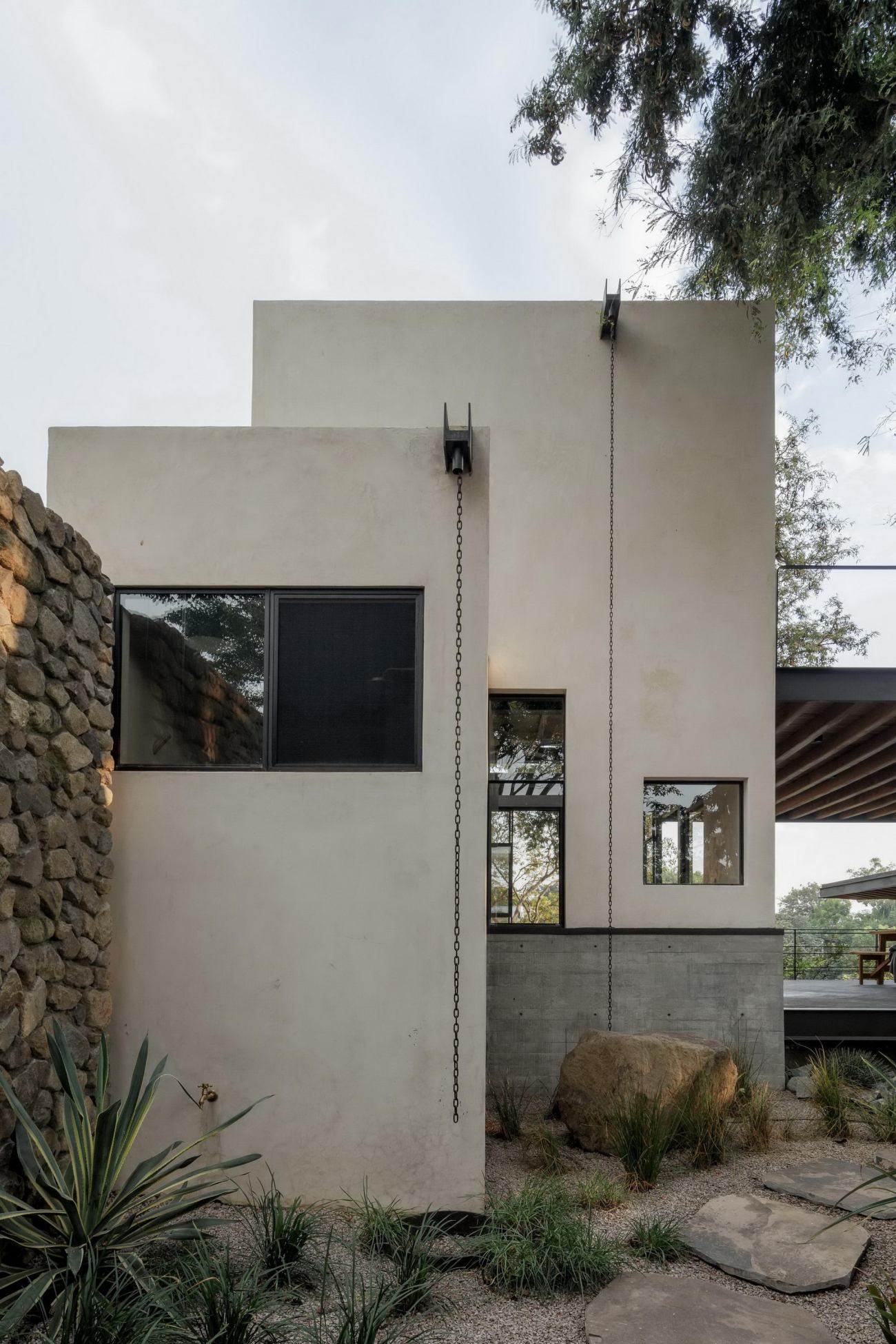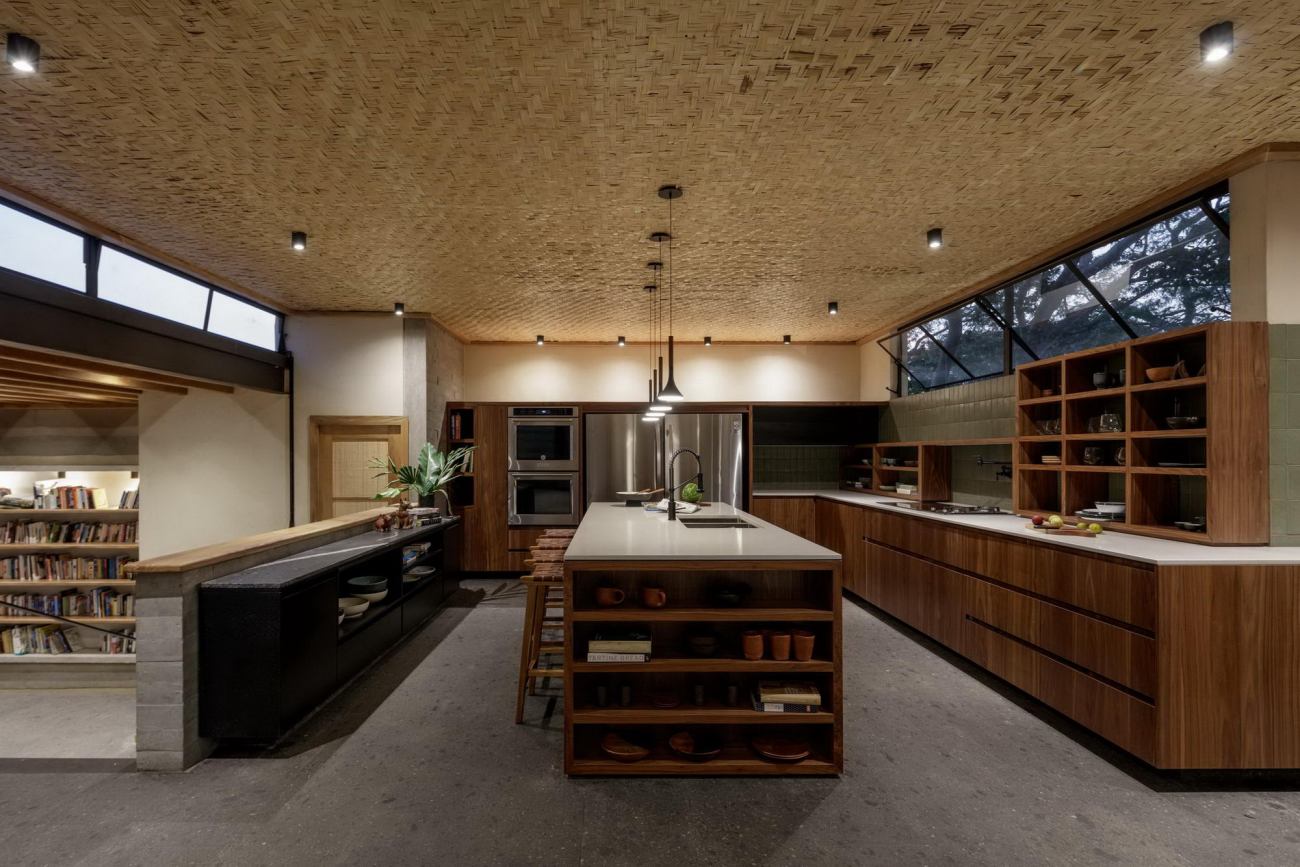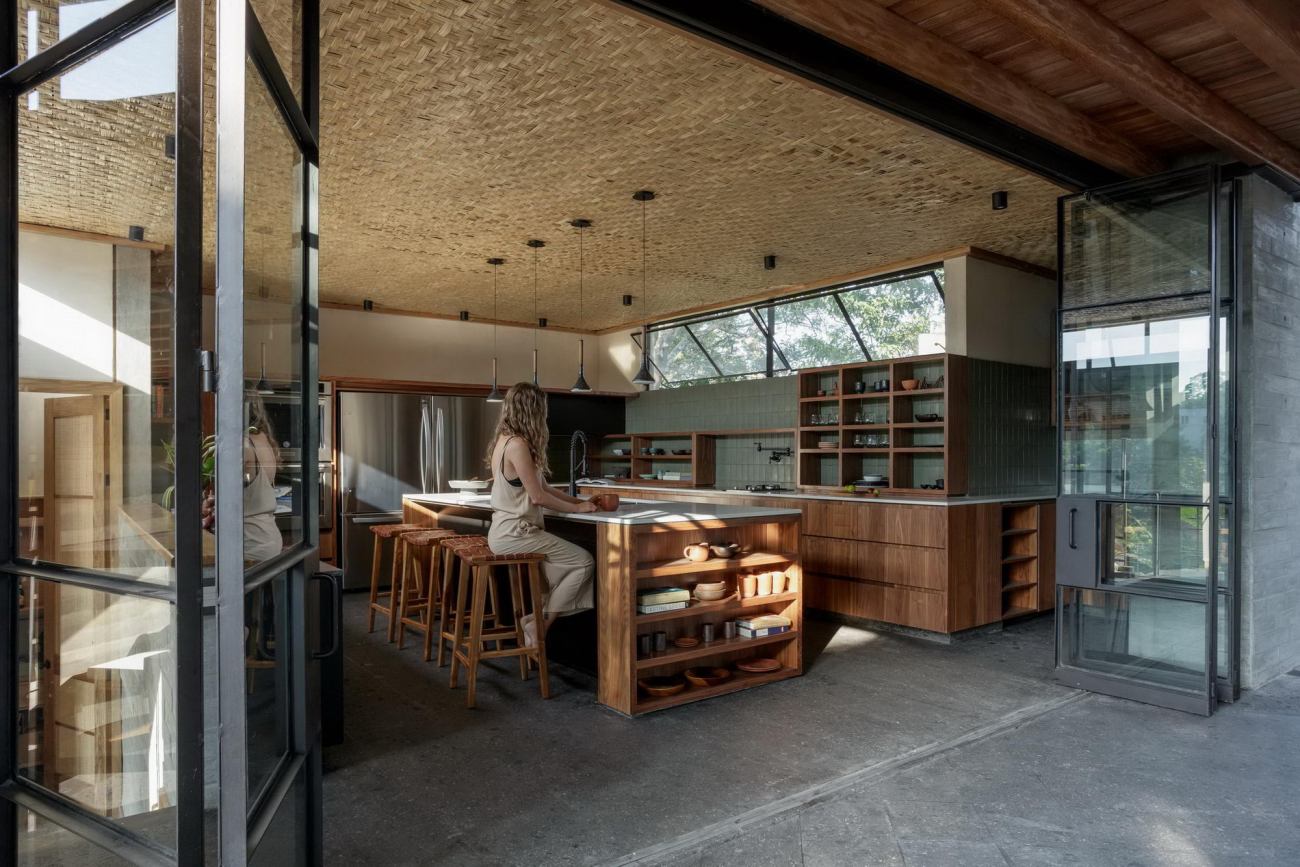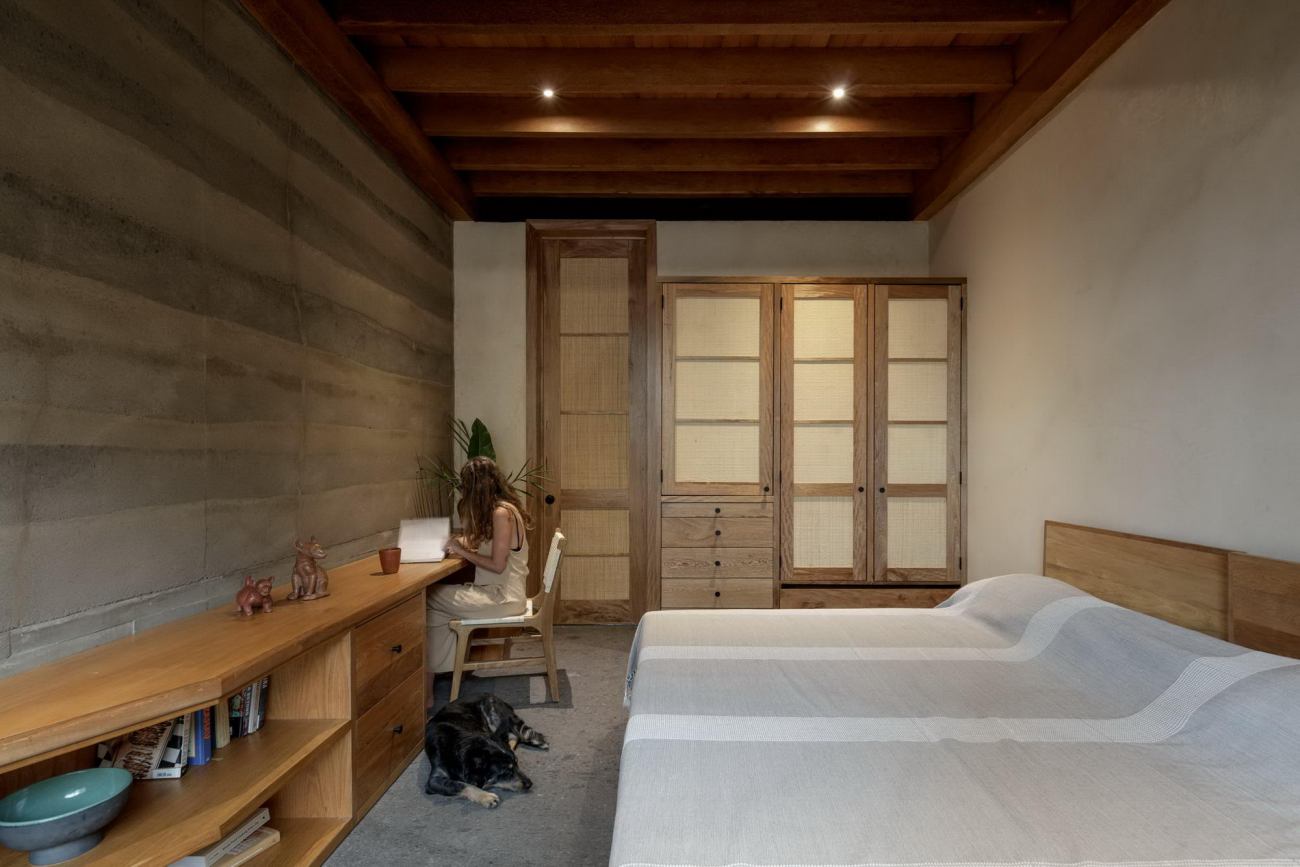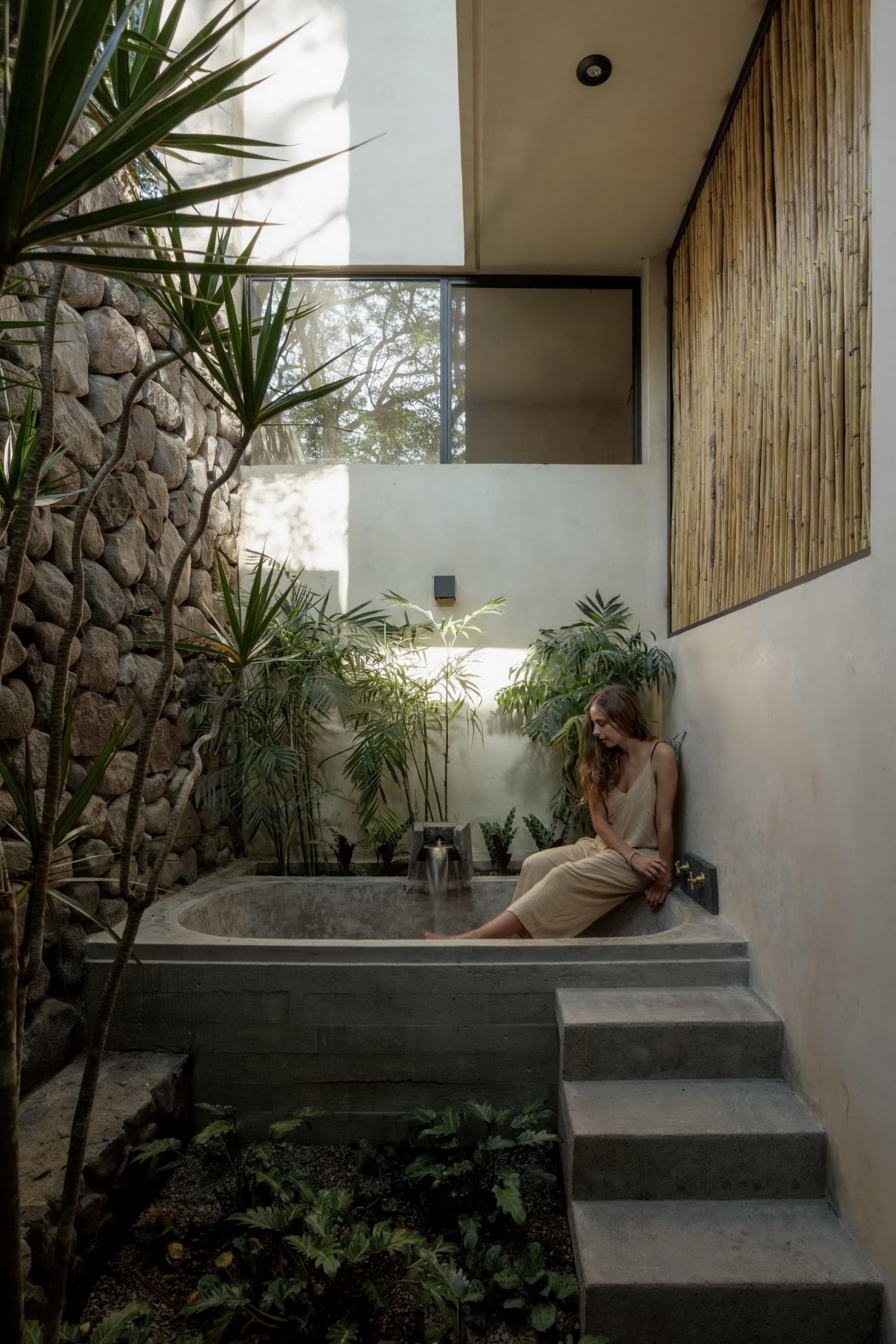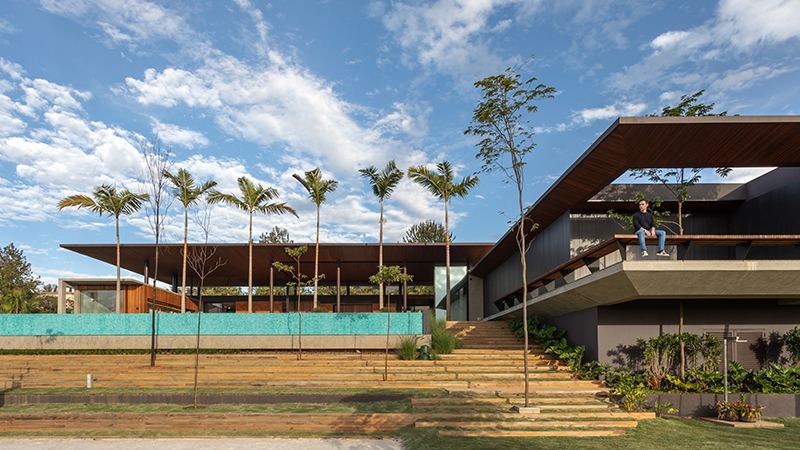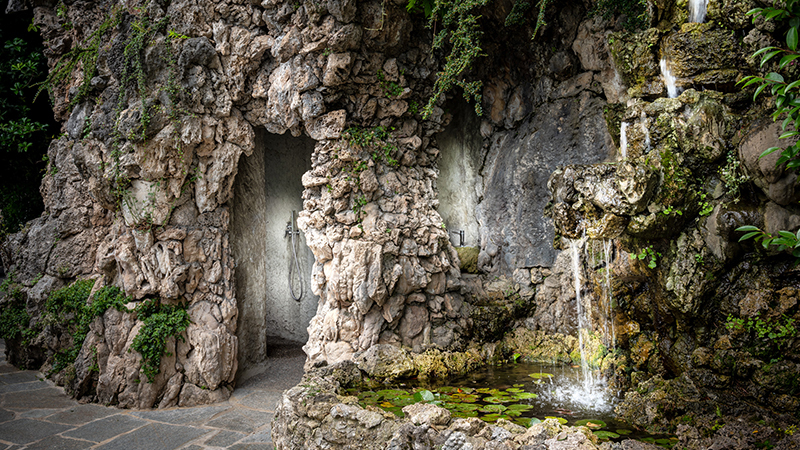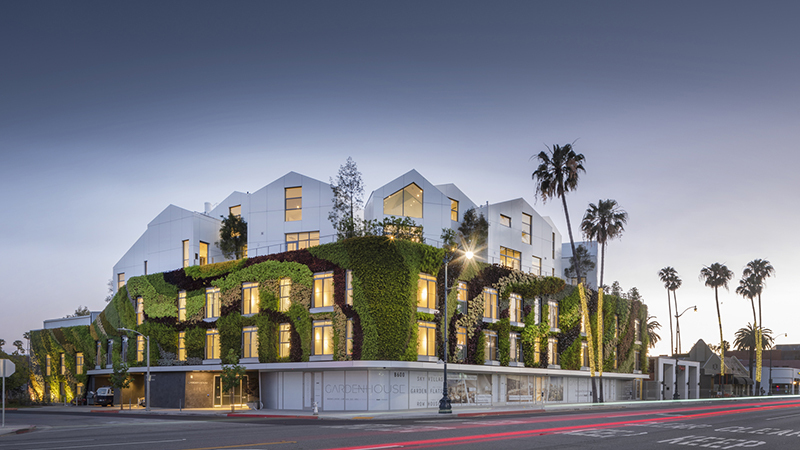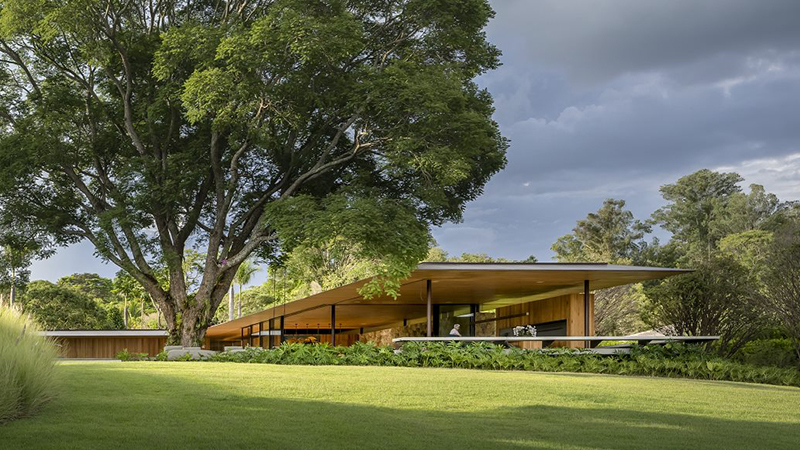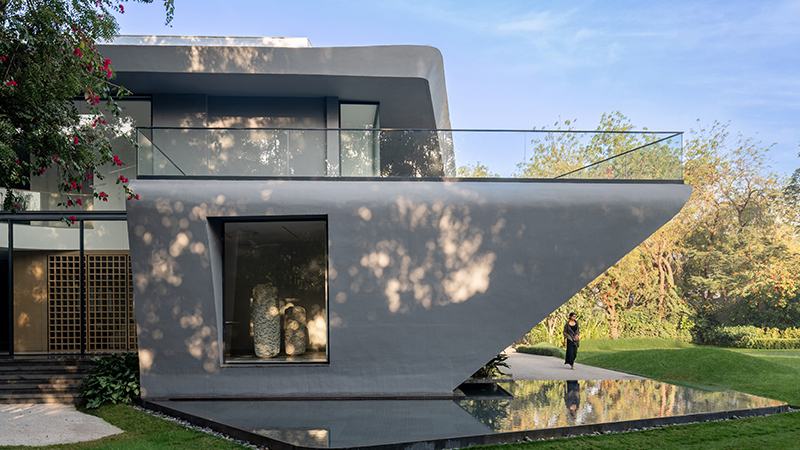| 公司: | Di Frenna arquitectos | 类型: | 建筑 |
|---|---|---|---|
| 地区: | 墨西哥 | 标签: | 别墅私宅 |
Alejandro Rangel Hidalgo是科利马最受喜爱且最具国际知名度的艺术家之一,他一生中的大部分时间都生活在小村庄Nogueras的庄园里。庄园前身是一座1700年代的制糖厂,在20世纪40年代被他的家人收购,至今仍然是社区的美丽地标建筑。Espacio Kaab位于庄园的一角,其设计向场地及其工艺,以及生活在此的艺术家致敬。Espacio Kaab的设计与庄园对话,引导人们以一种诗意的姿态来尊重场地,以及对其影响的更具体的反映,包括使用原有庄园综合体中回收的技术和材料。
Alejandro Rangel Hidalgo, one of Colima’s most beloved and internationally renowned artists, lived for most of his life in the hacienda that anchors the small village of Nogueras. The hacienda, originally established for sugar production in the early 1700s, was acquired by his family in the 1940s and remains a beautiful landmark of the community to this day. Espacio Kaab, which looks out over a corner of the hacienda, honors this venue and its craftsmanship, as well as that of the artist who occupied it. The design of Espacio Kaab exists in dialogue with the hacienda, directing views towards the property as a poetic gesture to honor its location, along with more concrete reflections of its influence, including the use of rescued techniques and materials that were originally used in the hacienda complex.
当人们进入场地,会立刻陶醉于自然环境,沉浸在美妙的安静中。场地以干燥的环境,耐旱的植物,仙人掌,石头和泥土为标志,让人感觉仿佛置身于一个气泡中,既拥抱了场地,又场地中丰富多彩的花卉形成鲜明对比。场地种植着白桃花心木,象耳豆和罗望子树,La Barragana河的壮丽景色环绕在周围,共同邀请人们感受该地区典型的亚热带气候。
As one enters the property, the natural environment immediately enchants the visitor, creating moments of quiet wonder; it is marked by dry, arid vegetation, cacti, stones, and earth that makes one feel as if in a bubble that both embraces and contrasts with the rest of the region’s colorful floral exuberance. Within and surrounding the property are primavera trees, parotas, tamarind trees, and a magnificent view of the La Barragana river that all serve to welcome you into the characteristic sub-tropical climate of the region.
▽标志性的耐旱植物,仙人掌,石头和泥土
建筑的平面与地形相辅相成,构建满足地形需求和特质的空间解决方案。构成项目核心并从最初指导其设计的基本原则如下:尊重地形,适应环境,并与环境和谐相处。最终使得项目如同一个温暖的怀抱:住宅被场地氛围所接收和包围。景观中最亮眼的主角是巨大的烛台仙人掌和罗望子树。这个原始植物集合被保护下来并进行再设计。由此产生的线性结构与周围环境的对话,构成了建筑的核心问题:什么构成了美的有机表达?从更实际的层面上说,景观和结构之间的对话构成了庭院和露台,包含花园,以及河流和峡谷的独特景观,从高度和规模的多样性提供为穿过建筑的人们带来丰富的体验和感受。
The architectural plan was developed in concert with the land, evolving as a spatial solution to the needs and idiosyncrasies of the terrain. The foundational principles that formed the heart of the project and that guided its design from the outset were the following: respect the topography, adapt to the setting, and find harmony with the environment. The result feels like a warm embrace: the residence is received and enveloped by the nature of the site. The most notable protagonists of the landscape are the gigantic organ cactus and the collection of tamarind trees. This constellation of preexisting plants was explicitly protected and designed around. The resulting dialogue of linear structures with their surrounding environment forms the core question that the house poses: what comprises an organic expression of beauty? On a more practical level, this dialogue between landscape and structure opens up patios and terraces, contained gardens, and unique views of the river and the canyon that, from the vantage points afforded by a diversity of height and scale, arouse different sensations as one walks through the house.
▽庭院
▽泳池
建筑的主要概念是创造内外边界模糊的空间:环境的起伏和颜色融入建筑物的阴影,住户可以赤脚走过相同的天然石材地板,无需区分是走出还是进入房屋,这种材料将他们的感官唤醒,另人沉浸其中。
The main concept of the build was to accomplish spaces where the boundaries between inside and outside blur: where the ranges and colors of the environment integrate into the shades of the building, and where the inhabitants can walk barefoot across the considered choice of the same natural stone floor without distinguishing whether they’ve come out or into the house and delight in the phenomenology that this materiality awakens in all of their senses.
▽模糊的内外边界
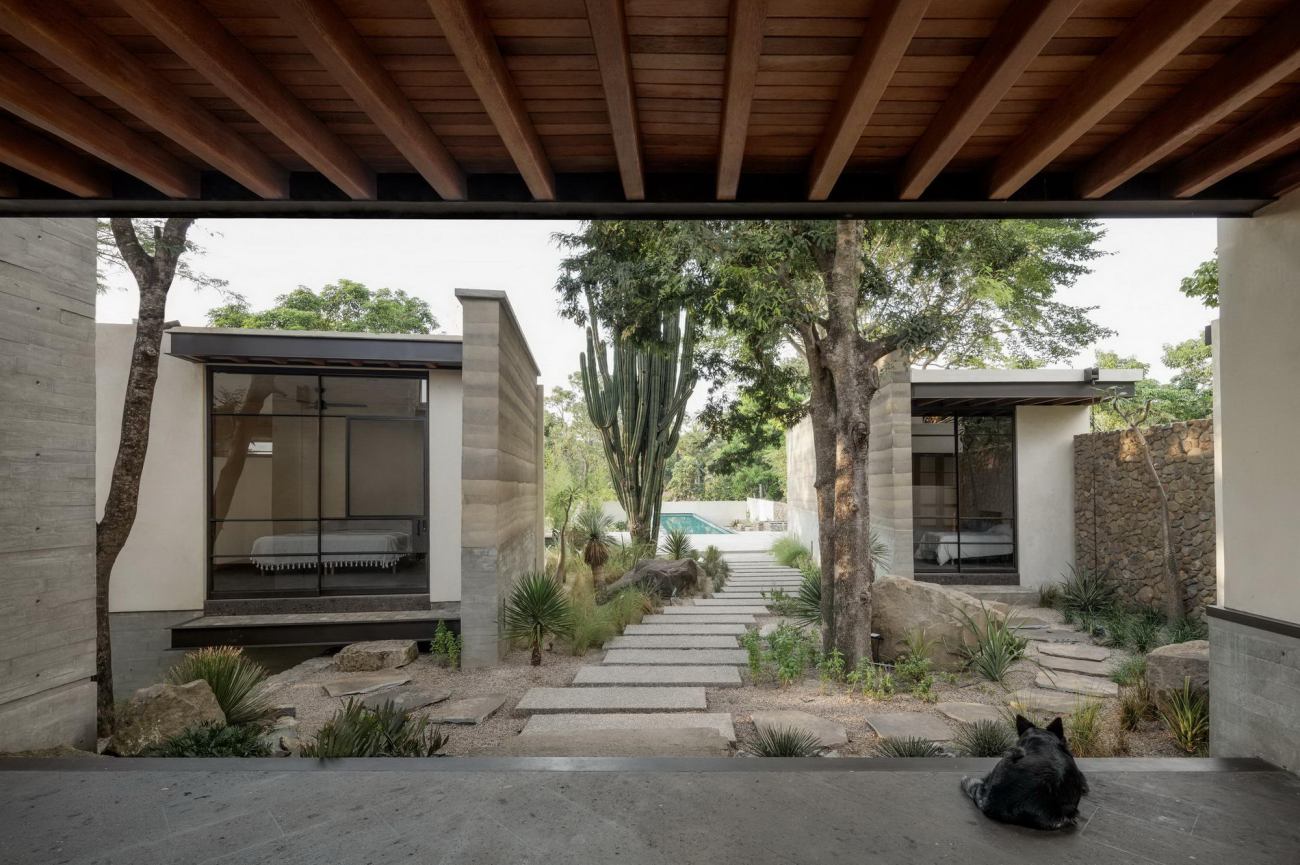 | 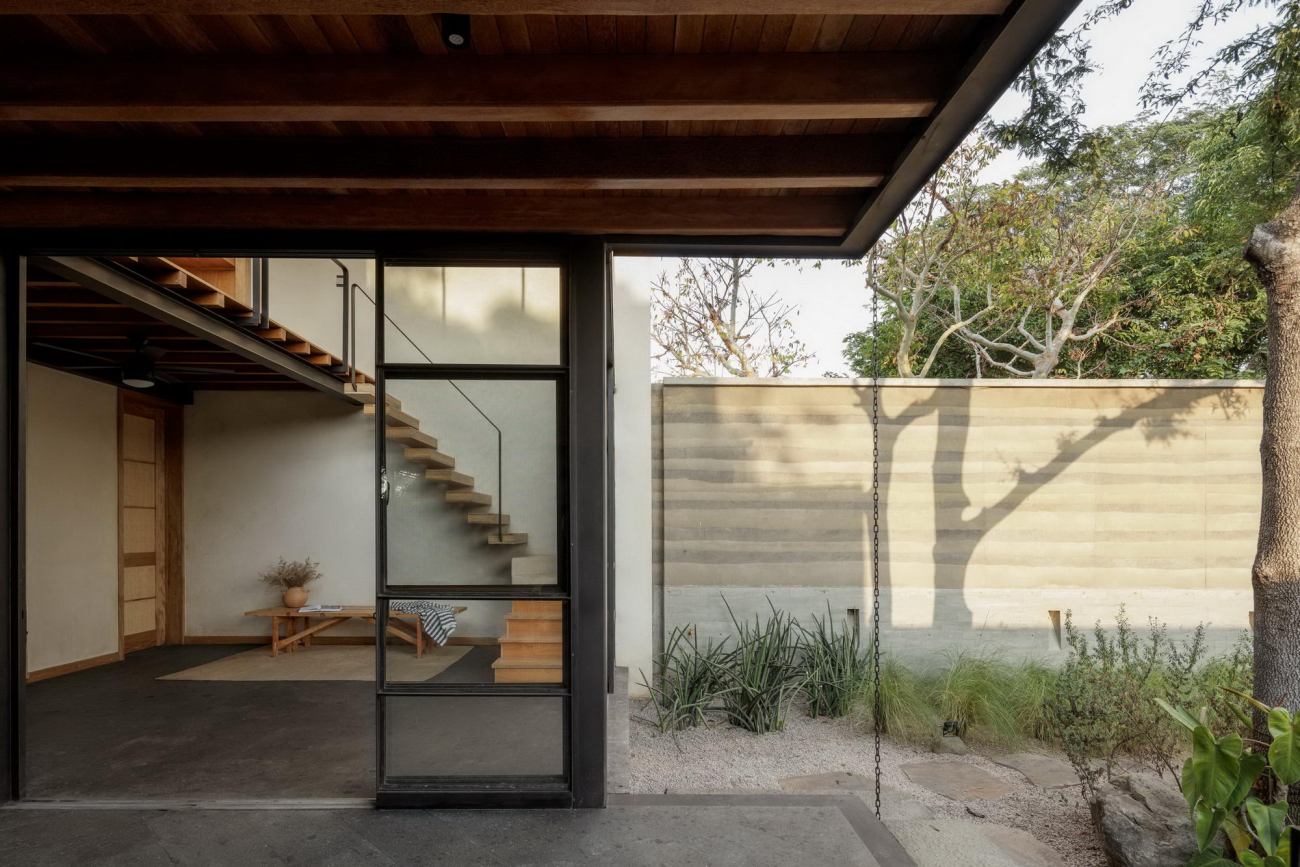 |
In order to achieve a perception of the house as a volume that emerged organically from the ground, raw, natural tones form the primary palette of the project. Some of these materials were sourced directly from Comala, most notably the rammed earth walls, which were formed using the ancient technique of compacting earth until it has the density and structural integrity of concrete. Other trademark tones, such as the eggshell-colored chukum stucco that graces many of the house’s walls, are also the result of ancient construction techniques and materials native to Mexico.
▽夯土墙
设计师一并采用了决定使用其他材料,如当地的棕榈木,河石,编织的卡里索天花板和手工铁器作为房屋的核心元素,突出了与土地和Rangel的手工艺的联系。通过将这些传统工艺和材料与新技术和创新的结构解决方案相结合,空间也超越了原始的技术和灵感。
The decision to use other components like local palm wood, river stone, ceilings of woven carrizo, and artisanal blacksmithing as the core elements of the house highlight the connection to the land and to the craftsmanship promoted by Rangel. However, the space also transcends the original inspiration by marrying these traditional crafts and materials to new techniques and innovative structural solutions.
 | 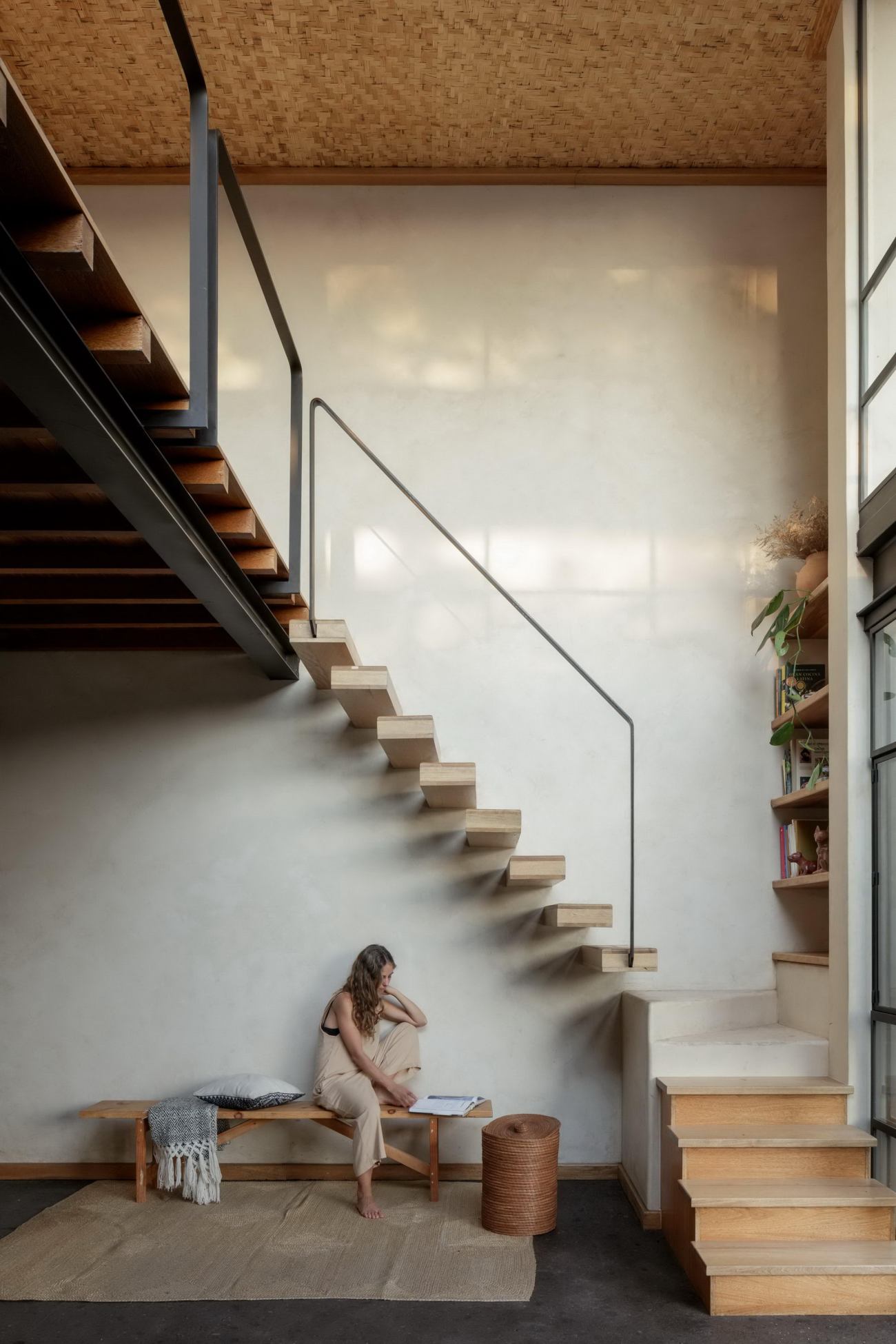 |
▽客厅
▽餐厅
设计还需考虑挡土墙,这对于建筑空间和土地之间的协调是必要的。这些雄伟的墙体沿着房屋的路线形成了许多角落和空间。项目通过这种方式,与典型的墨西哥房屋呼应,体现了殖民地建筑传统,空间中布满庭院,惊喜和小憩空间。此外,Esspacecio Kaab中也结合了日式建筑的风格,横梁以完美的节奏穿过房屋的不同体量,其中开放空间和独特的视角从建筑内部诞生。
It is essential to take into consideration the retaining walls, which are necessary for the harmonization between the built space and the land. These marked and imposing axes provide nooks and spaces for contemplation along the route of the house. In this way, the Project references the typical Mexican house: a colonial architectural tradition that benefits from patios, surprises, and small pauses. In Espacio Kaab, however, that motif is combined with references to Japanese architecture, integrating beams that move with an impeccable rhythm through the different volumes of the house, and in which open spaces and unique perspectives are born from the interior of the construction.
▽设计中结合了日式建筑的风格
项目的关键原则指导着其发展的每个阶段,也因此体现在其建筑的各个角落和元素中,从体积的分布和放置到室内设计,使房屋呈现出最终的触感。大部分家具都由石头和木材制成,去掉不必要的装饰以凸显其原始的美感。除了周到的间接照明外,室内设计还受邻近庄园启发,强调其独特的特征。
The key principles of the project guided every stage of its evolution, and as such they remain present in every corner and in every element of its construction, from the distribution and placement of the volumes to the interior design that gives the house its final touch. Much of the furniture is crafted from stone and wood, presented without unnecessary adornment to celebrate its inherent beauty. Along with the indirect and thoughtful lighting, the interiors insist on an identity that is informed by the neighboring hacienda, but is ultimately truly unique.
▽平面图
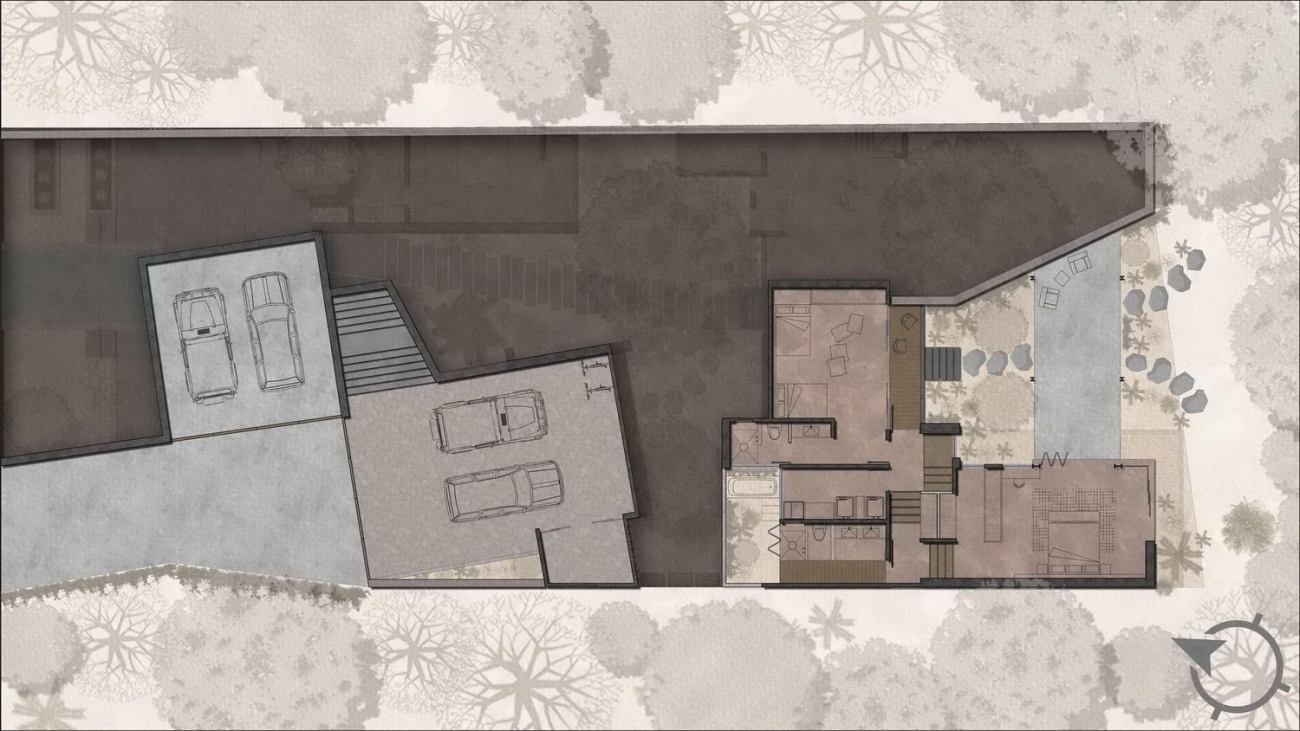 | 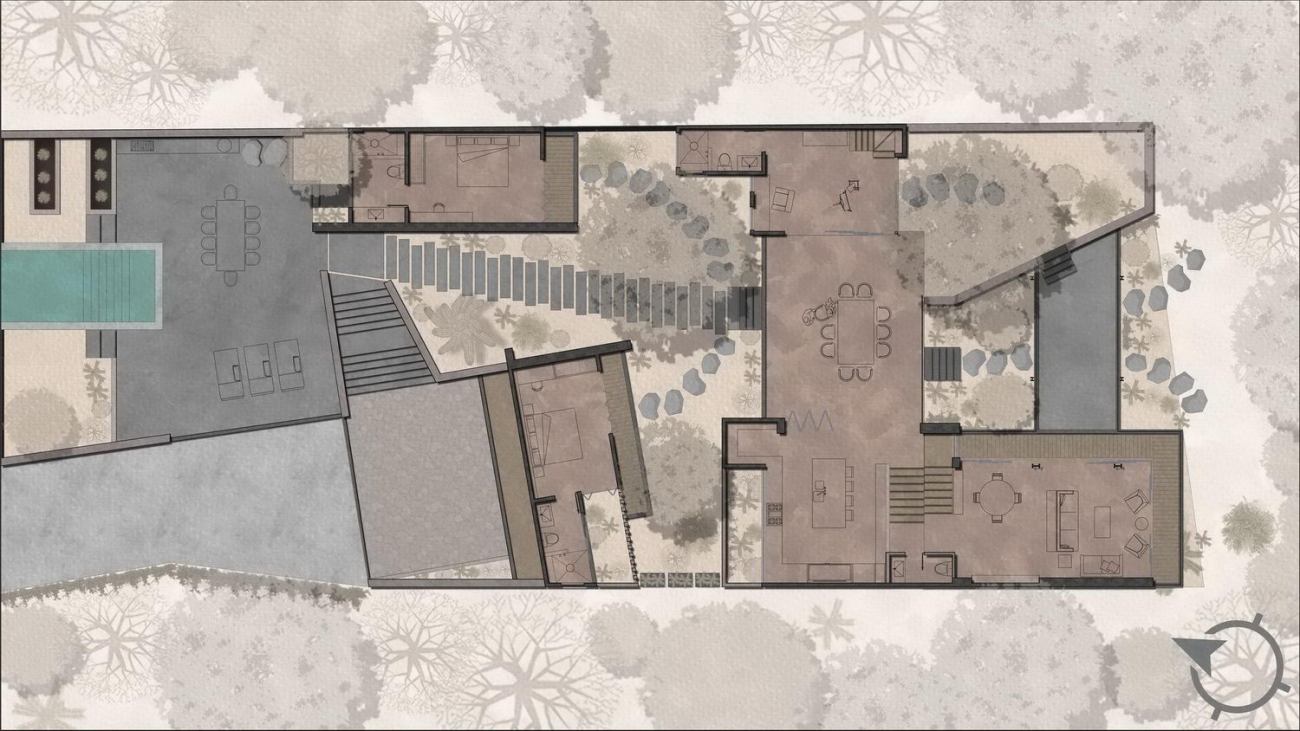 | 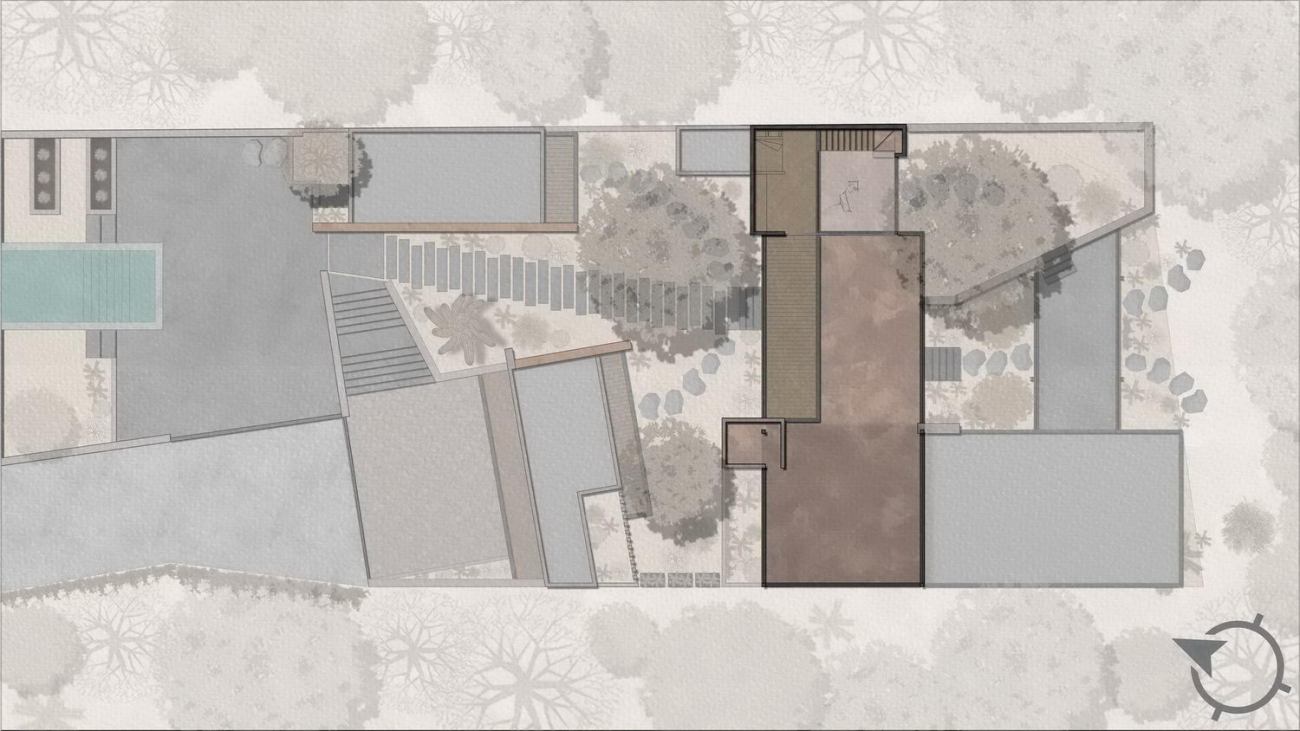 |
▽立面图
 | 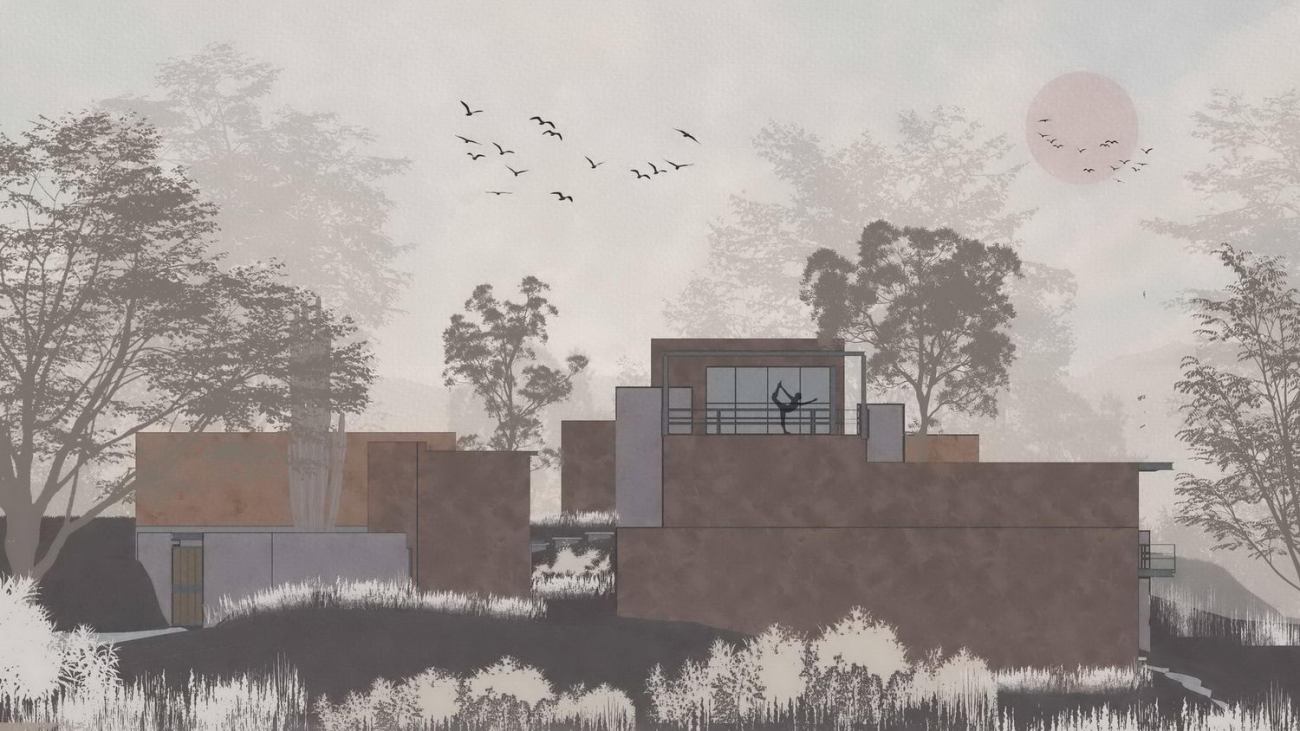 |
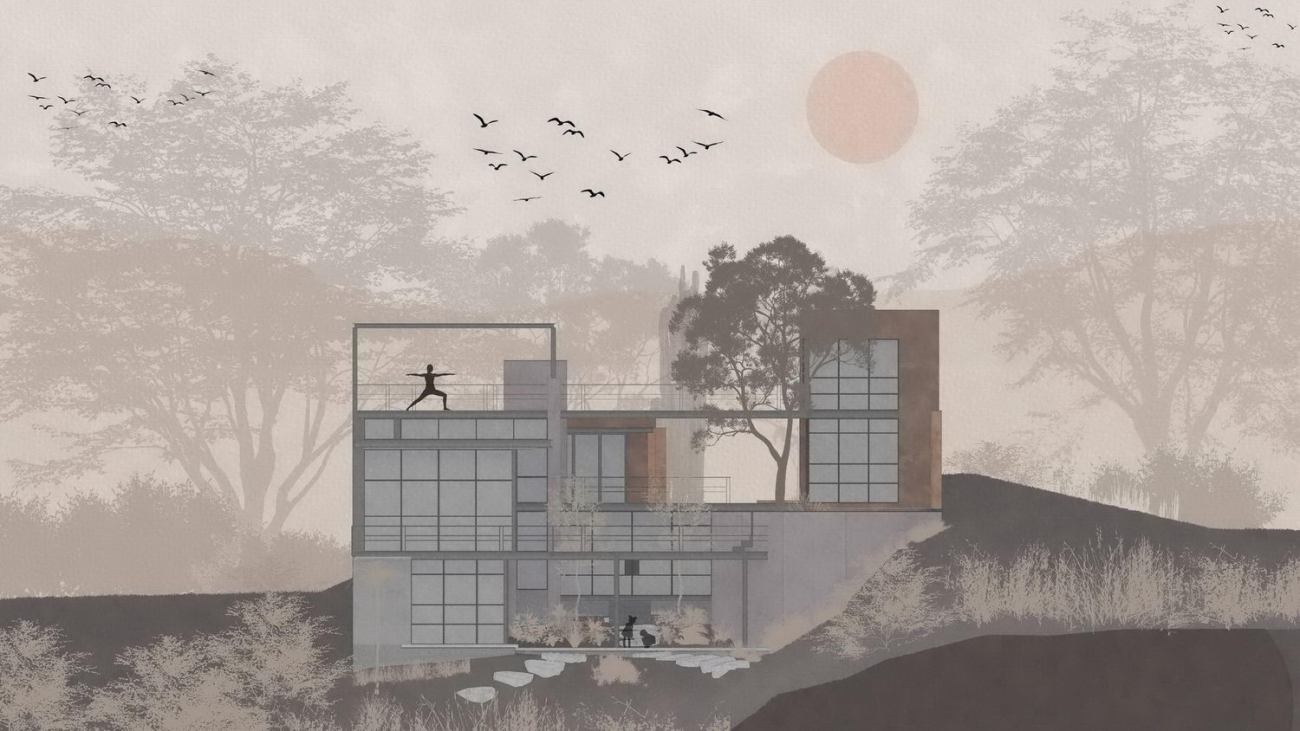 |  |
▽剖面图
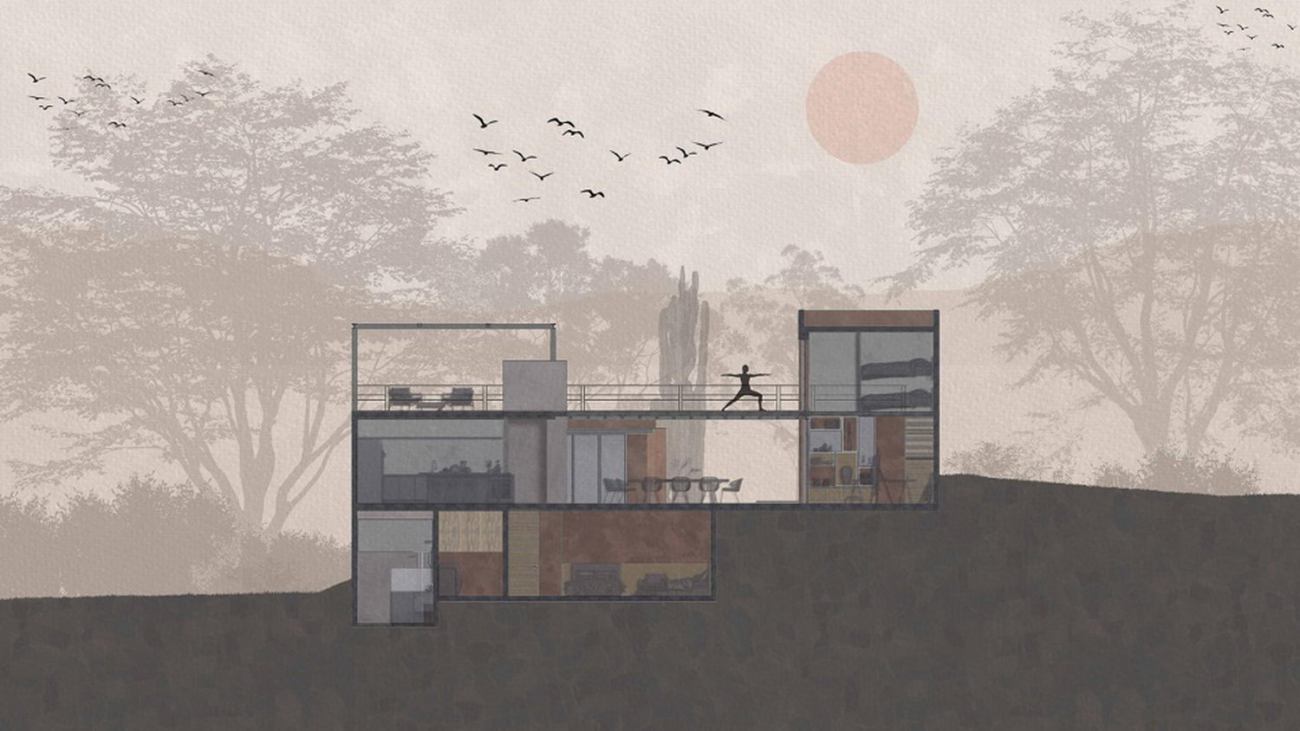 | 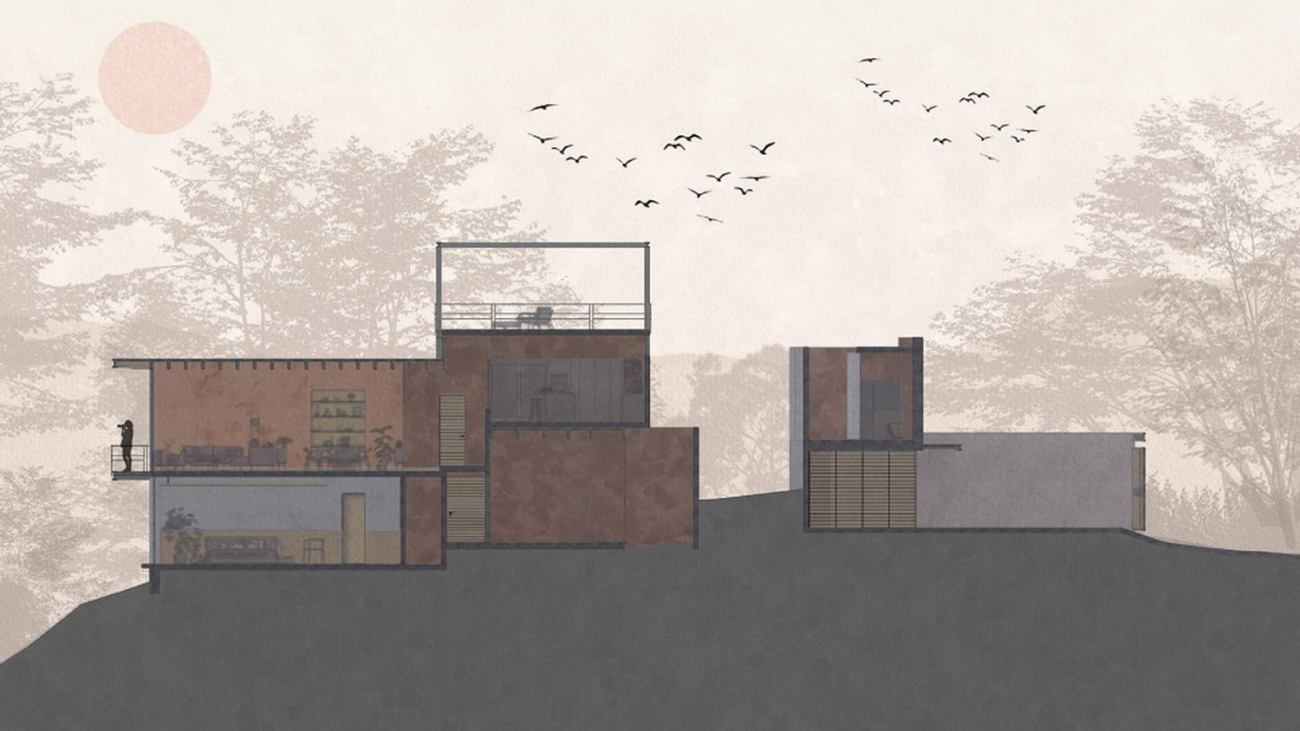 |
PROJECT INFORMATION
Project name: Espacio Kaab
Company: Di Frenna arquitectos
Completion year: December 15, 2021.
Area (M²): 401.00 m².
Photography: Lorena Darquea.
Work team: Architect Matia Di Frenna Müller, Architect Mariana de la Mora Padilla, Engineer Juan Gerardo Guardado Avila.
Type of project: Single-family residential.
Location: Nogueras, Comala, Colima; Mexico.
更新日期:2022-06-21 16:26:29
非常感谢 Di Frenna arquitectos 带来的精彩项目, 查阅更多Appreciations towards Di Frenna arquitectos for sharing wonderful work on hhlloo. Click to see more works!
